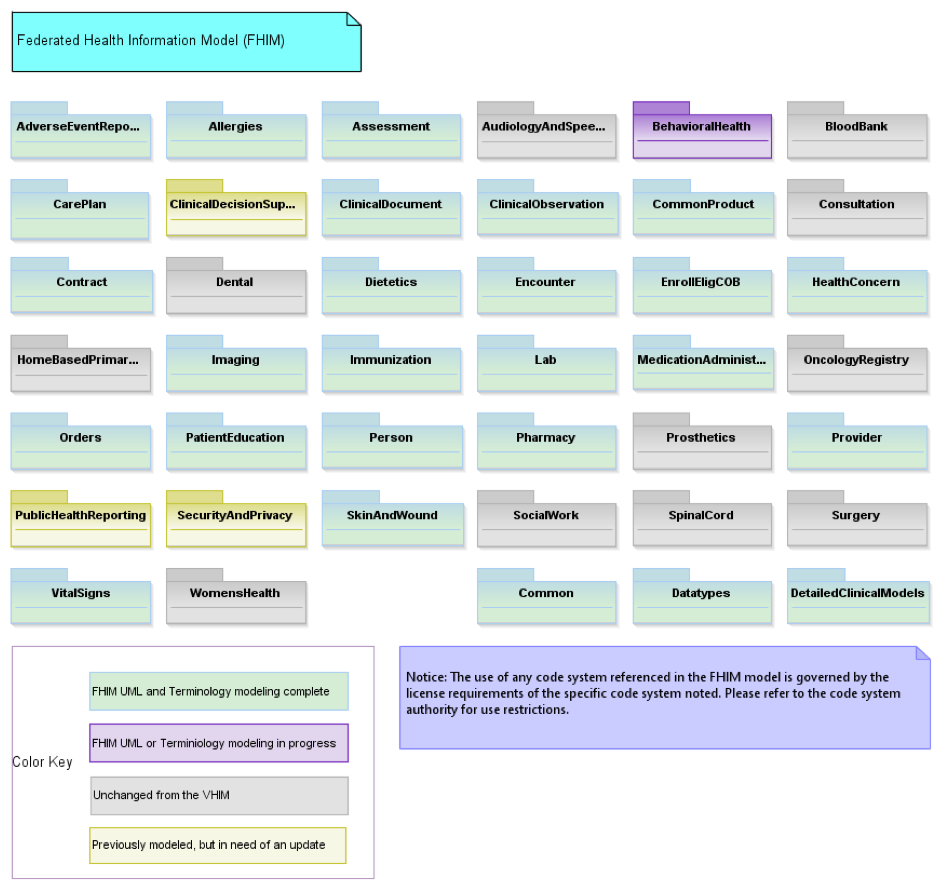Information Model content consists of demographic, clinical, and financial information classes and attributes that are exchanged between systems. For example, the classes and attributes involved in a clinical system sending a medication prescription to a pharmacy system, or in receiving a patient’s test result from a laboratory system, or in reporting a vaccination to a public health reporting system. These classes and attributes are derived by examining existing stakeholder Electronic Health Record systems, as well as the current information exchanges that those systems perform, and any standards used by government organizations. The model is not concerned with information that is not exchanged between organizations. Relationships between the classes and attributes are documented and modeled as well as their use in multiple contexts. The model is organized so the classes and attributes are defined once and reused as needed. The range of values an attribute may have (e.g., whether it is a number or a date) are identified and the attributes are assigned an appropriate data type. Attributes that are identified as containing more than one of a set of possible values (e.g., eye color may be blue, brown, black, etc.), are further modeled to determine the set of values (see the Terminology Modeling process). By fully defining the classes and attributes in this manner, they can be used to support multiple use cases, multiple information exchanges and multiple technologies without loss of meaning.

